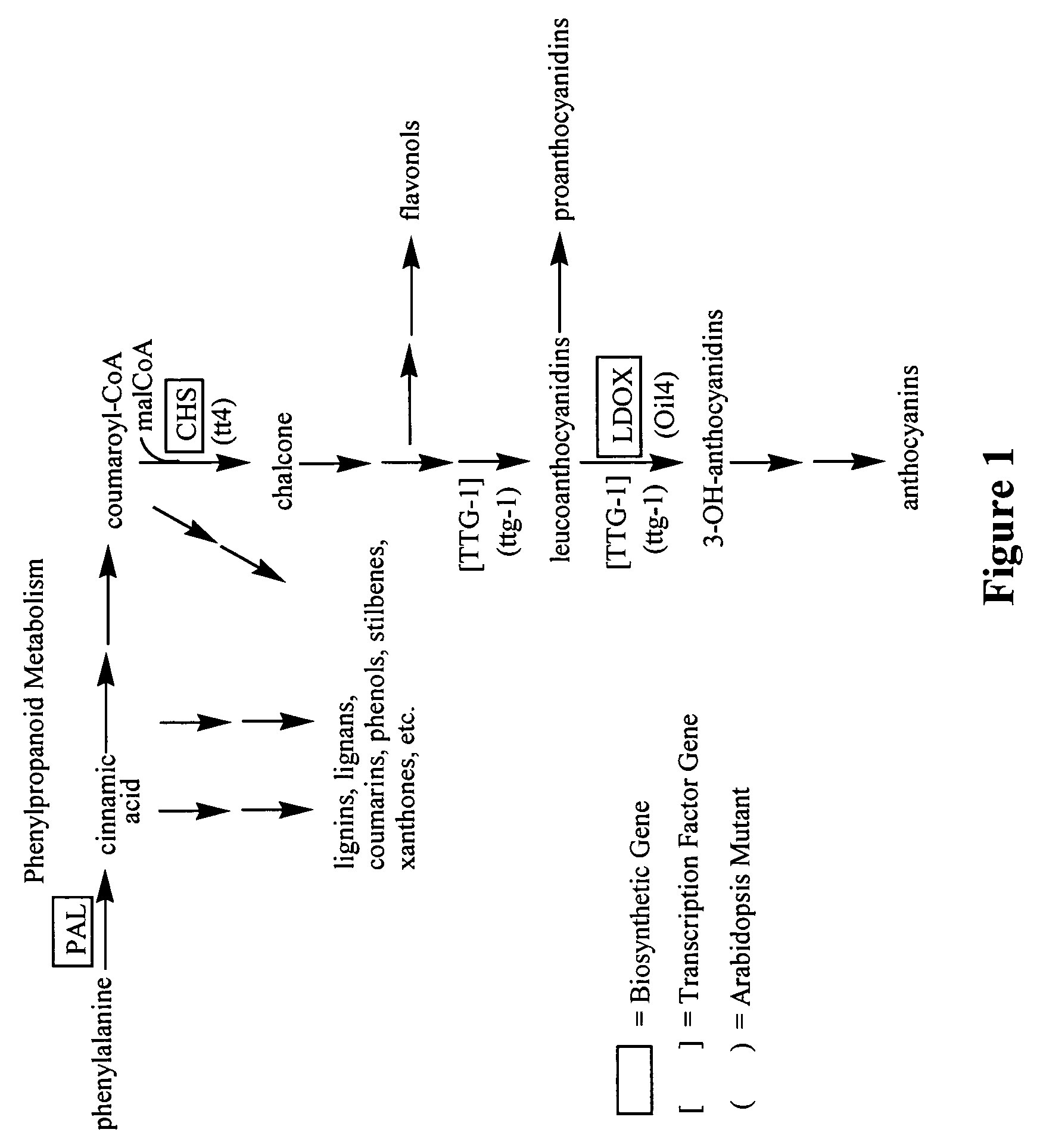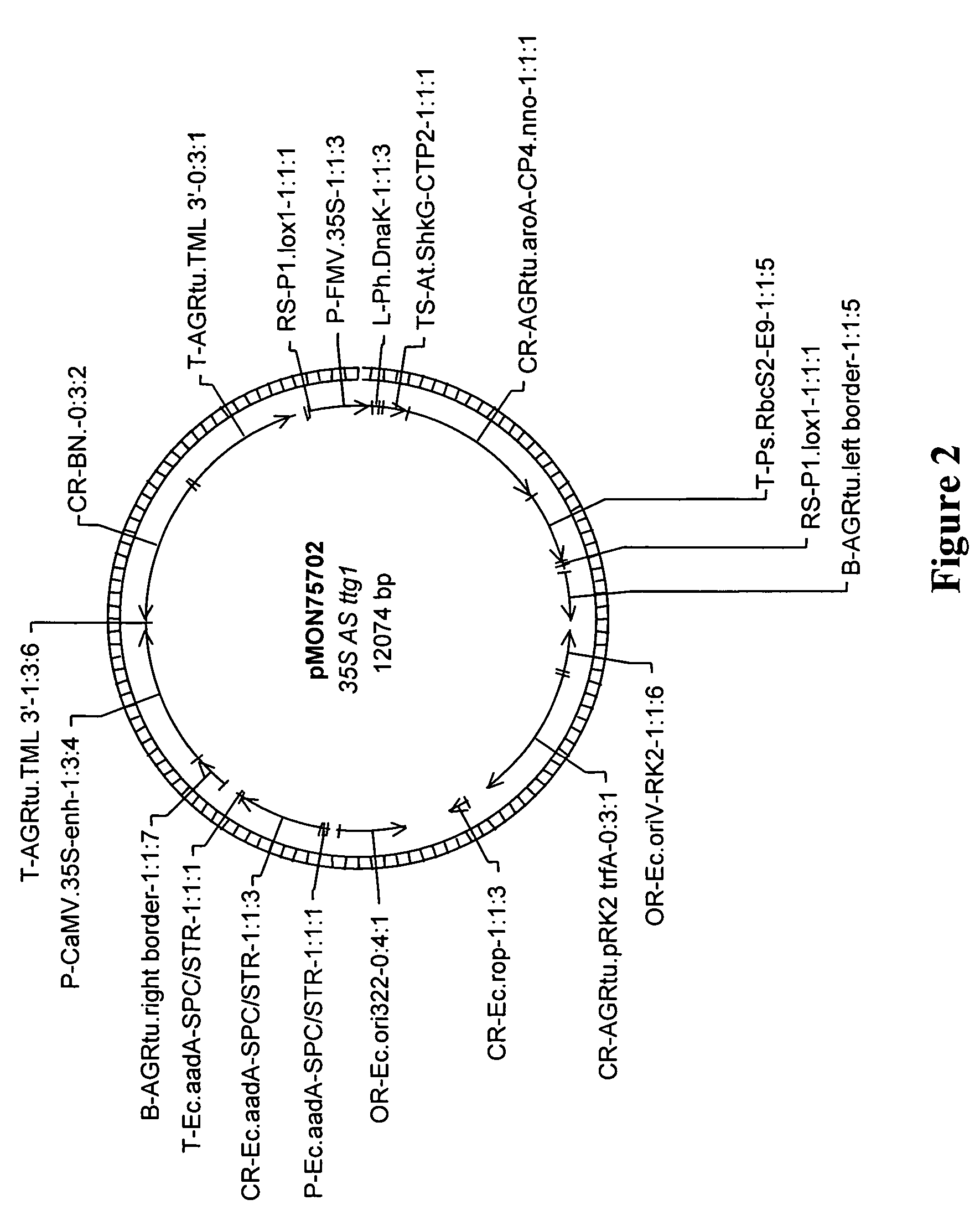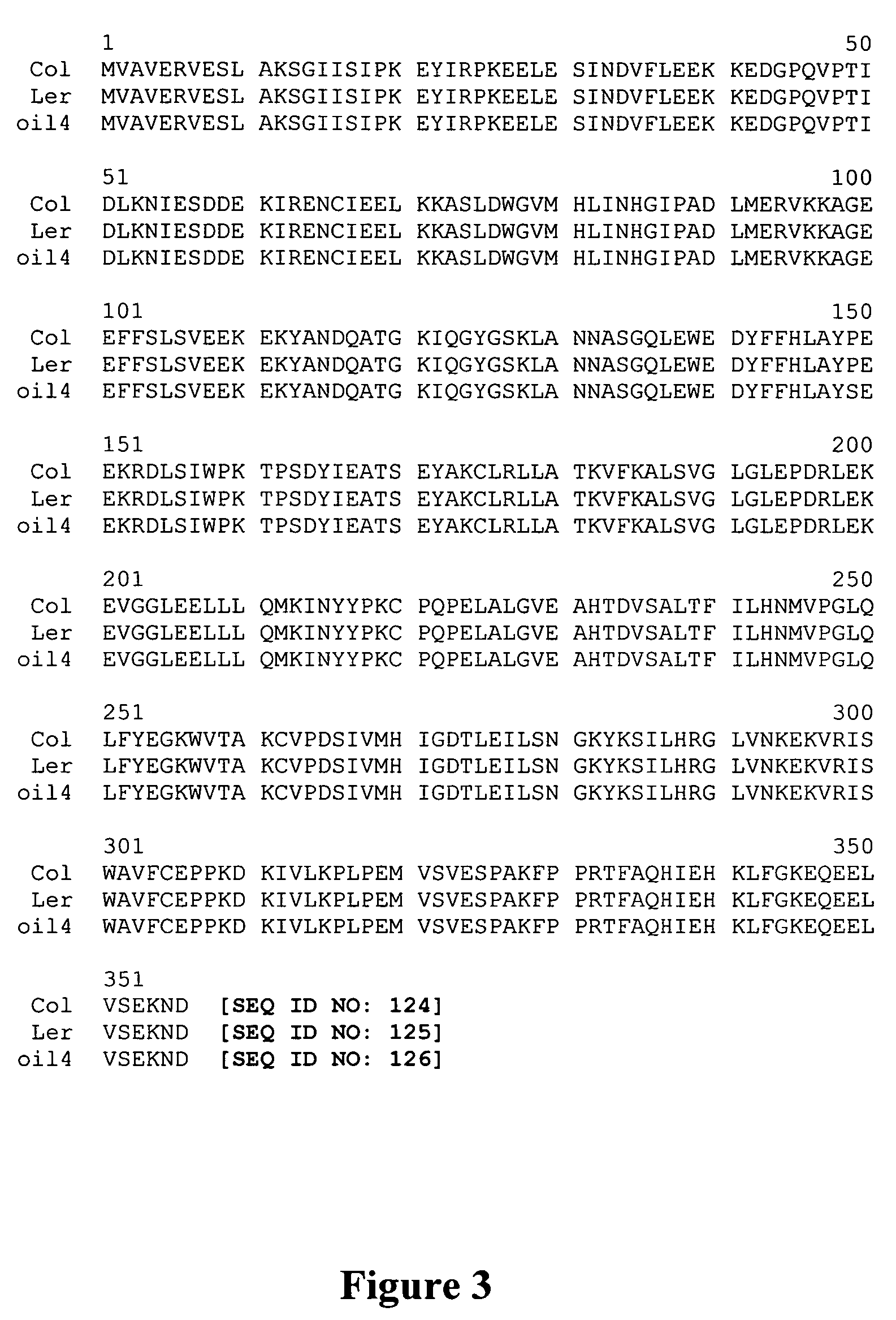Production of increased oil and protein in plants by the disruption of the phenylpropanoid pathway
a technology of phenylpropanoid pathway and plant oil, which is applied in the field of nuclear acid chemistry and agricultural biotechnology, can solve the problems of not increasing the oil content in these experiments substantially, and achieve the effects of increasing the oil content of a plant, disrupting the function of the phenylpropanoid pathway protein, and increasing the oil content of the plan
- Summary
- Abstract
- Description
- Claims
- Application Information
AI Technical Summary
Problems solved by technology
Method used
Image
Examples
example 1
[0150]This example sets forth the identification and sequence analysis of a chalcone synthase ortholog from Brassica napus and TTG1 orthologs from corn, soybean and canola.
[0151]The Arabidopsis thaliana chalcone synthase (CHS) nucleic acid sequence (GenBank Accession M20308, SEQ ID NO: 31) was used as a BLAST query against proprietary Brassica napus sequence libraries. A single EST clone from a sequence library that was derived from whole seeds at 30 days after pollination, LIB4156-020-R1-K1-E4 (SEQ ID NO: 149), was identified as having high homology. A 944-base pair fragment containing the CHS coding sequence was removed from LIB4156-020-R1-K1-E4 by digestion with SmaI and XbaI. The fragment was purified and sequenced using methodology well known in the art. This purified fragment containing the Brassica napus CHS ortholog (BnCHS) (SEQ ID NO: 33) was then cloned in the antisense orientation between the e35S promoter and the tml 3′ UTR in a backbone vector. The resulting plasmid, co...
example 2
[0155]This example describes the construction of plant transformation vectors with the BnCHS and BnTTG1 coding sequences described above.
pMON75051 (e35S::BnCHS(antisense)::tml)
[0156]A 3470-base pair fragment containing the e35S promoter, the BnCHS (SEQ ID NO: 33) in antisense orientation and the tml 3′ UTR was removed from the vector KAHADF032096 by digestion with NotI. The fragment was ligated into the vector pCGN11121, which had been digested with NotI. The vector pCGN11121 contains a nopaline T-DNA right border sequence and octopine T-DNA left border sequence, in between which are the promoter from the Figwort Mosaic Virus (FMV) and the intron from Z. mays HSP70 driving the expression of the CP4 EPSP synthase gene containing a CTP, linked to a synthetic EPSP synthase coding region and the 3′ UTR from the pea rbsc E9 gene and the recognition sites for the recombinase. The resulting plasmid was named pMON75051. The nucleic acid sequence was determined using standard sequencing meth...
example 3
[0171]This example describes the transformation of canola and Arabidopsis plants.
Arabidopsis Transformation
[0172]Arabidopsis seeds, mutant and wild type, are sown onto 2¼ inch pots containing reverse osmosis water (ROW) saturated MetroMix 200 (The Scotts Company, Columbus, Ohio). The plants are vernalized by placing the pots in a flat, covered with a humidity dome, in a growth chamber at 4-7° C., 8-hrs light / day for 4-7 days. The flats are transferred to a growth chamber at 22° C., 55% relative humidity, and 16-hrs light / day at an average intensity of 160-200 μEinstein / s / m2. After germination, the dome is lifted and slid back about 1 inch to allow for mild air circulation without desiccation. The humidity dome is removed once true leaves have formed. The plants are bottom watered, as needed, with ROW until well established, generally 2-3 weeks after germination. Plants are then bottom watered, as needed, with Plantex 15-15-18 solution at 50 ppm N2. Pots are thinned so that 1 plant r...
PUM
| Property | Measurement | Unit |
|---|---|---|
| pH | aaaaa | aaaaa |
| pH | aaaaa | aaaaa |
| length | aaaaa | aaaaa |
Abstract
Description
Claims
Application Information
 Login to View More
Login to View More - R&D
- Intellectual Property
- Life Sciences
- Materials
- Tech Scout
- Unparalleled Data Quality
- Higher Quality Content
- 60% Fewer Hallucinations
Browse by: Latest US Patents, China's latest patents, Technical Efficacy Thesaurus, Application Domain, Technology Topic, Popular Technical Reports.
© 2025 PatSnap. All rights reserved.Legal|Privacy policy|Modern Slavery Act Transparency Statement|Sitemap|About US| Contact US: help@patsnap.com



